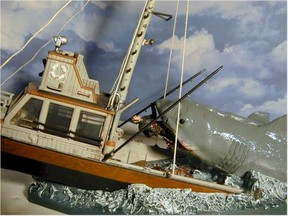 You can be forgiven a lot in horror writing. Cliches are not only embraced, but expected. Unlikely scenarios will be believed, if they are written well enough. Stupidity on the part of protagonists is overlooked.
You can be forgiven a lot in horror writing. Cliches are not only embraced, but expected. Unlikely scenarios will be believed, if they are written well enough. Stupidity on the part of protagonists is overlooked.
But you will never get away with a paper thin, undeveloped threat.
The whole point of horror is to make you care about a person or people, then place them into unspeakable danger.
The worst that could happen does happen, with terrifying abandon.
A moment can be totally lost, if the reader loses faith in the terrible thing. I always recall, at this point, a scene in the movie Jaws. The tension was all there. The horror was real and present. The shark that jumped out of the ocean was blatantly rubber. Not even very well crafted rubber at that.
Let's just say that it all turned very swiftly into comedy in our house.
Fortunately, we don't have to worry about bad special effects in literature, because most of that is in our reader's mind. However, that doesn't give you license to leave your baddie or bad situation undefined.
Horror works because whatever is out there, however unlikely, might actually be true. Take Mary Shelley's Frankenstein. At the time of her writing, people really were digging up corpses. The medical associations needed them to teach their surgeons.
Also hot off the press was the experimentations of Luigi Aloisio Galvani, who was sticking sparks into the muscles of dead frogs. The result seemed to animate them for a moment. We call it 'galvanization' after him today.
So while the actual story of Dr Frankenstein was fictitious, all of the elements were in place in reality. That's what made it perfect horror material. But that wasn't all that Mary Shelley did. We were invited into the mind of both the doctor and the creature. We saw how they thought and what they did. There was back-story; and hopes and dreams for the future.
It's not always possible to gain all of this with your monsters or other danger points. No-one is going to stop a zombie to ask about their inner feelings and motivation. (The answer in all cases is 'braaaaiiiinnnnssss'.) But the more rich in detail your story's antagonist, the more readily your reader will accept the threat.
Then they can get on with emotionally reacting to it.



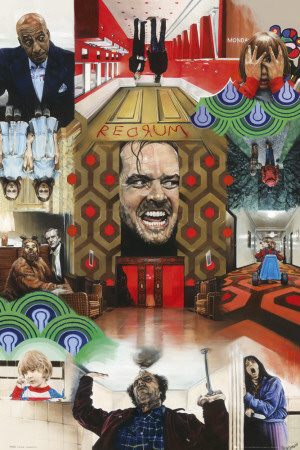





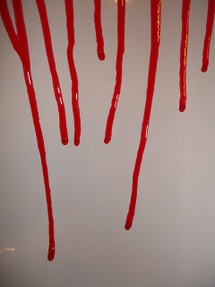 No-one is saying that you should sanitize your work, least of all me. If any genre cried out for blood, guts and gore, it's horror.
No-one is saying that you should sanitize your work, least of all me. If any genre cried out for blood, guts and gore, it's horror.
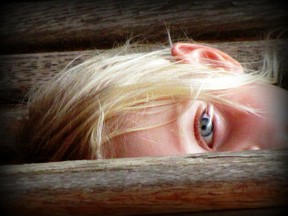 Both Interview with the Vampire and Carrie are written in the first person. The Haunting of Hill House is third person, but it's still a stream of consciousness from the point of view of Eleanor.
Both Interview with the Vampire and Carrie are written in the first person. The Haunting of Hill House is third person, but it's still a stream of consciousness from the point of view of Eleanor.



 You can be forgiven a lot in horror writing. Cliches are not only embraced, but expected. Unlikely scenarios will be believed, if they are written well enough. Stupidity on the part of protagonists is overlooked.
You can be forgiven a lot in horror writing. Cliches are not only embraced, but expected. Unlikely scenarios will be believed, if they are written well enough. Stupidity on the part of protagonists is overlooked.





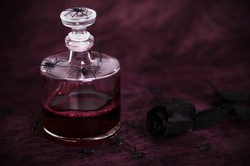

 St Tydecho's Churches in West Waleson 09/03/2014
St Tydecho's Churches in West Waleson 09/03/2014
 Goodies for an Outlander Premiere Partyon 03/06/2015
Goodies for an Outlander Premiere Partyon 03/06/2015
 Holocaust Memorial Day Interview with Rainer Höss, Grandson of Rudolf Architect of Auschwitzon 01/24/2015
Holocaust Memorial Day Interview with Rainer Höss, Grandson of Rudolf Architect of Auschwitzon 01/24/2015
 Romantic Valentine Gifts for an Outlander Fanon 01/16/2015
Romantic Valentine Gifts for an Outlander Fanon 01/16/2015

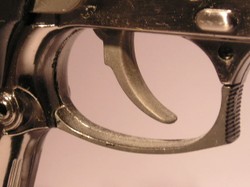
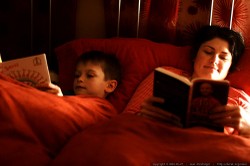
Comments
I would read Stephen King if he or his editors bothered checking his mechanics better. He has gotten so sloppy that those mistakes became great distractions. Eye sores. I know a lot of his fans slowed down buying his books. If you can recommend me one horror book to read, I'll read the first chapter. I was recommended Divergent, when I wanted to see what the teen books were about. And I loved it...and then the second book happened...and then the third...and then I didn't even finish the series I was so mad at how awful it became. I made it my lesson NOT to write like that.
Koffeeklatchgals - With you all the way there. For me, the absolute master was Edgar Allan Poe. I should have mentioned him in the article.
2uesday - You should just do it. The key to writing any novel is to just do it. If you're fretting on if it's working or not, then you'll never get it finished. Get to the end, then go back and edit anything that didn't work. But unintentional turns are usually the best bits, in my experience anyway! <3
Brrrraaaaiiiinnnnssss.
I'm glad that you liked that. :D
I'm still laughing at the idea of interviewing a zombie! Excellent.
Thank you very much!
I'm right with you on that one, hence my love of Shirley Jackson's stuff. She's just so subtle about it. I don't think I've read 'Lisey's Story'! I'll put it on my reading list.
Stuff like killer thrillers, in literature form, just bore me. When they're in movie form, they make me jump, but there's nothing clever about it. It mixes being startled up with being scared, which means that there's no real fear there.
The best horror stories ever still have you staring wide eyed at the wall, whenever you remember certain scenes, several years after you've read it. They take you in so well that a part of you stays there.
Great article!
I've always found horror is at it's best when it's believable. Most good horrors will start out normal, and gradually get scarier, really dragging you in and making it credible.
For example, the most chilling book I ever read was Stephen King's "Lisey's story", not necessarily because of all the horror stuff, but because the main character was facing life after her husband''s death. That was scary.